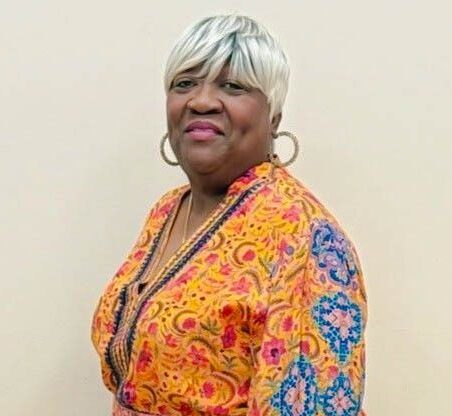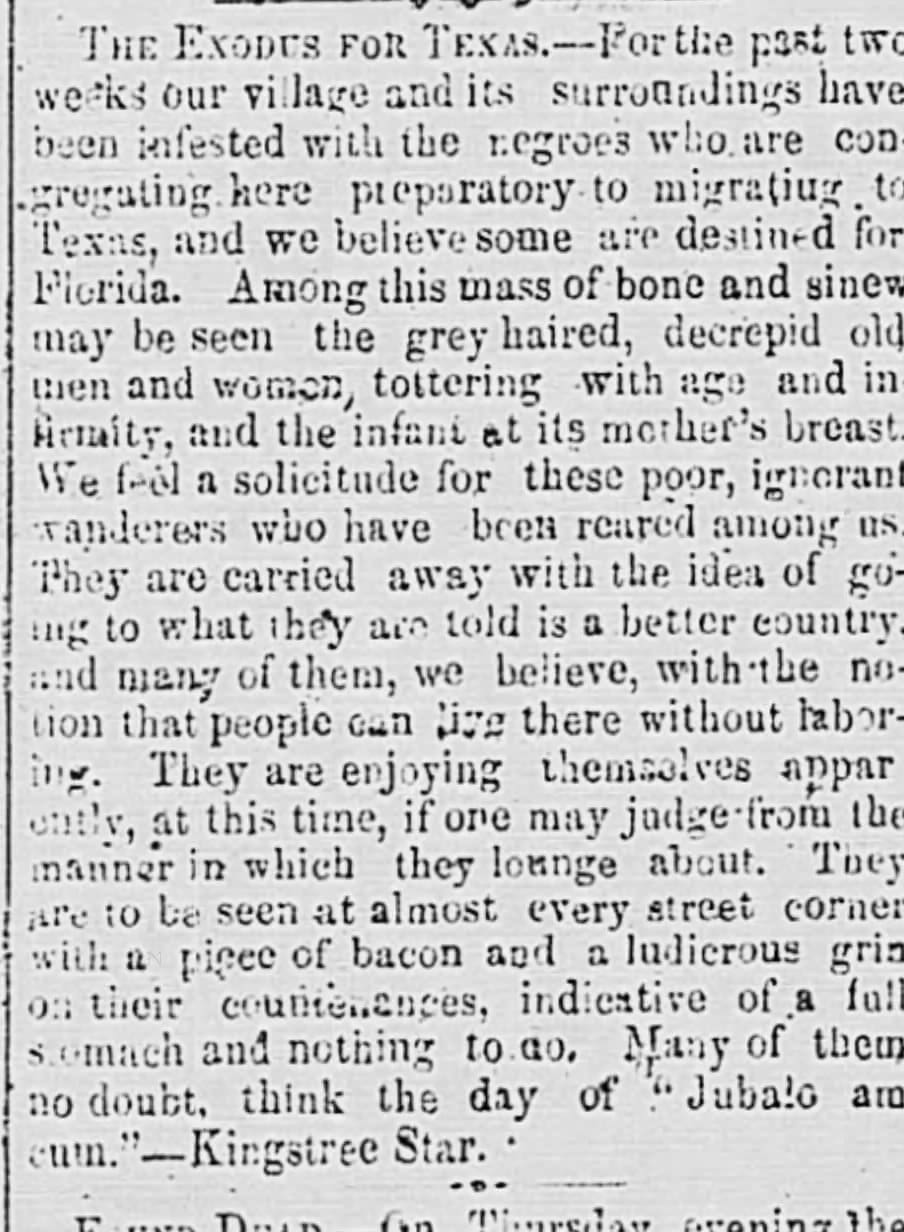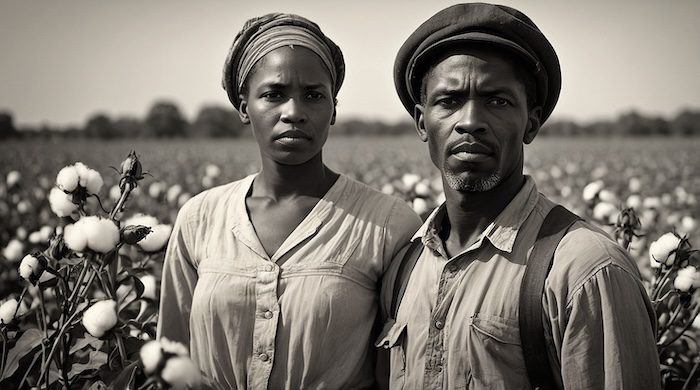
Passengers of the 1867 Journey – 435 Freedmen
Stories, Families, and Records of the Migration from Kingstree, SC to Marlin, TX
In 1867, 435 Freedmen, men, women, and children, were transported from Kingstree, South Carolina, to Marlin, Texas. Their journey, organized by planters James Sanford Jones and Cornelius M. Summers, was part of a larger effort to rebuild Texas’s cotton empire using the labor of formerly enslaved people. This page preserves their family stories, records, and newspaper accounts, complementing the [Return to Marlin Memorial Project →]
“Family Stories: The Shaw & Tisdale Families”
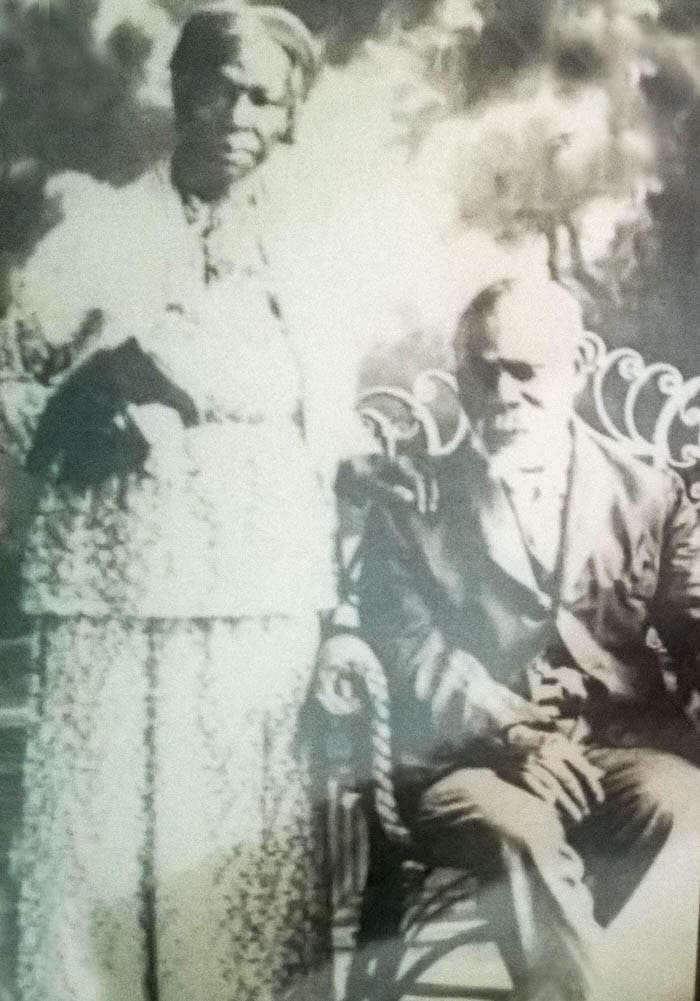
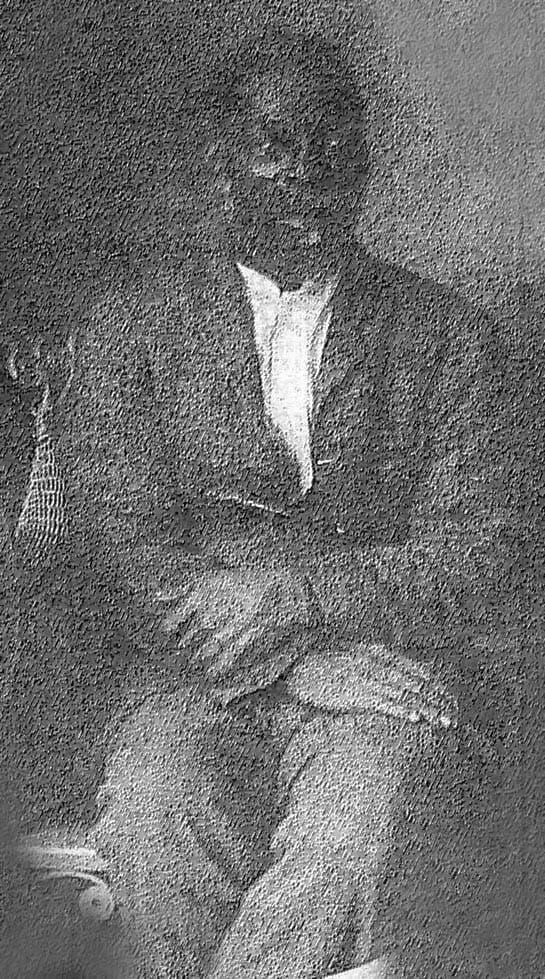
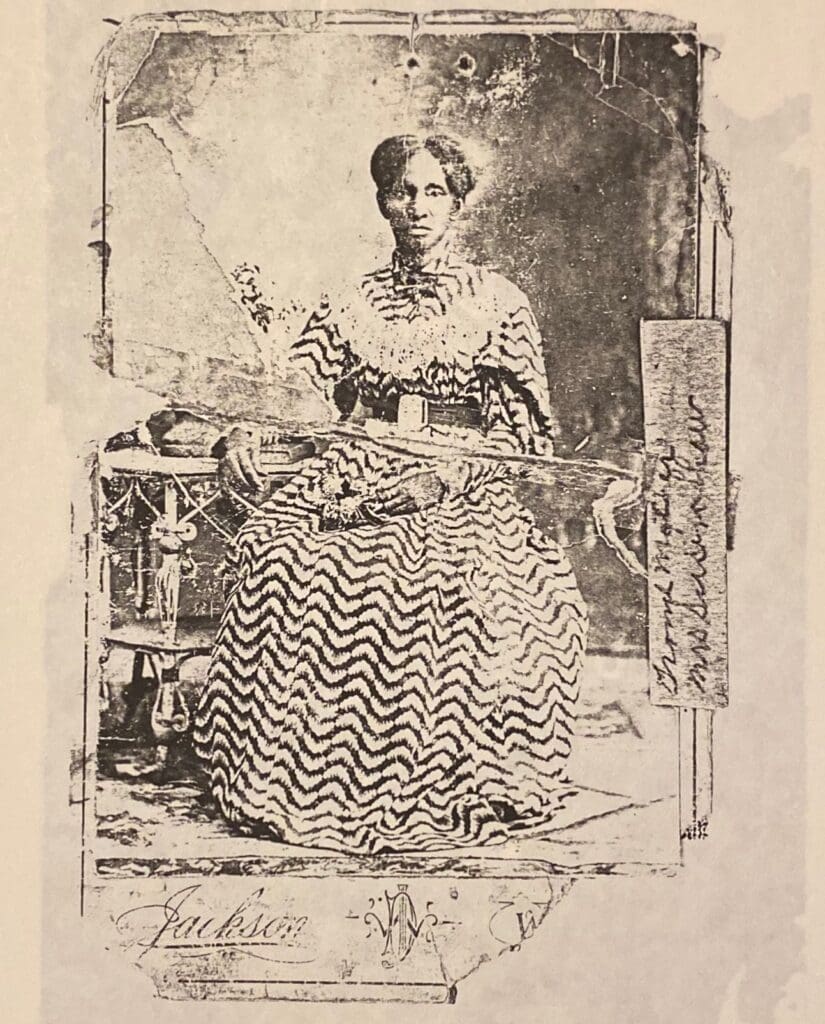
“Family and Migration to Texas”
Among the 435 Freedmen were families like the Shaws and Tisdales, whose lives reflect the struggle, resilience, and determination of those who made the journey from South Carolina to Texas.
Anthony Shaw 1843-1941
Anthony Tisdale Shaw was born on January 1, 1843, to Betsy Tisdale and Joe Shaw in Williamsburg District, South Carolina, enslaved on the William Tisdale Plantation. His early life was marked by both hardship and profound loss. His mother, Betsy Tisdale, passed away when Anthony was just five years old, leaving him to navigate the harsh world of slavery without her guidance. At the age of 17,
Anthony’s life was upended yet again when he was given as a wedding gift to Mary Tisdale, who married Thomas A. McCrea. This cruel transfer of human ownership was a common practice during the era of chattel slavery, underscoring the dehumanization that defined the lives of the enslaved.
When Anthony reached his early twenties, the tides of history began to shift. On May 8, 1865, at the age of 22, he made the life-altering decision to enlist in the Union Army. His enlistment was not just an act of military service it was a strategic step toward securing his freedom papers, a tangible symbol of liberation that many enslaved men sought through service in the United States Colored Troops (USCT). Anthony served in the 104th United States Colored Infantry Regiment, part of the Union Army’s critical force of Black soldiers who fought for emancipation and the preservation of the Union.
Military records describe Anthony as a man standing 5 feet 4 inches tall, with black hair, dark eyes, and a dark complexion, weighing approximately 175 pounds. These physical details, carefully recorded at the time of his enlistment, are among the few surviving personal identifiers of his early life.
Anthony’s service in the Civil War came at a pivotal moment May 1865 just weeks after General Robert E. Lee’s surrender at Appomattox, but still during a period when the war’s final engagements and the broader fight for freedom continued. His enlistment speaks to the determination of formerly enslaved men to secure not only their legal freedom but also their rightful place in American society.
Judy Shaw was the first wife of Anthony Shaw. The couple married in South Carolina, likely before the end of the Civil War, during a period of profound transition for African American families. By 1870, federal census records document Anthony and Judy living in Marlin, Falls County, Texas, one of many families who migrated westward during Reconstruction in search of freedom, opportunity, and stability. Sadly, Judy passed away not long after their arrival in Texas. Based on available records, it is believed she died around 1875. The 1880 Federal Census lists Anthony (recorded as Antrum Shaw) as a widower, living with his son, Ben Shaw, further confirming Judy’s passing sometime in the previous decade.
Sarah Bradley became the second wife of Anthony Shaw. She was born in April 1860 in South Carolina, a generation shaped by both the final years of slavery and the uncertain promise of Reconstruction. Sarah and Anthony were married in 1880 in Robertson County, Texas, marking a new chapter in Anthony’s life following the passing of his first wife, Judy Shaw. Together, Sarah and Anthony built a large family, raising fifteen children over the course of 17 years. Their union reflects the resilience and determination of African American families rebuilding their lives in the post-emancipation South and West.
widower, living with his son, Ben Shaw, further confirming Judy’s passing sometime in the previous decade. Sarah Bradley became the second wife of Anthony Shaw. She was born in April 1860 in South Carolina, a generation shaped by both the final years of slavery and the uncertain promise of Reconstruction. Sarah and Anthony were married in 1880 in Robertson County, Texas, marking a new chapter in Anthony’s life following the passing of his first wife, Judy Shaw. Together, Sarah and Anthony built a large family, raising fifteen children over the course of 17 years. Their union reflects the resilience and determination of African American families rebuilding their lives in the post-emancipation South and West.
Susan Tisdale Shaw
Susan Tisdale was born in 1827 in South Carolina and lived much of her early life enslaved on the Tisdale Plantation in Williamsburg County, South Carolina. Despite the harsh realities of slavery, Susan formed a family with Joe Shaw. Together, they had twelve children, seven sons and five daughters, whose lives would carry forward their legacy.
Amidst the hardships of bondage, Susan and Joe Shaw built a family together, raising seven sons and five daughters. Their lineage would go on to shape generations beyond slavery. Following emancipation, Susan and Joe settled in Texas, where she lived out her later years. She passed away on June 28, 1917, in Marlin, Falls County, Texas. Susan was laid to rest at Evergreen Cemetery in Marlin, where her final resting place remains a quiet witness to the resilience and enduring legacy of those who survived slavery and helped build new communities in freedom.
Children of Joe Shaw and Susan Tisdale
- ➡️ 1846 - Silvia Shaw (Russell)
- ➡️ 1848 - Fannie Shaw (Bennett)
- ➡️ 1857 - Gillette Shaw
- ➡️ 1858 Duke Tisdale (Remained in Kingstree, SC)
- ➡️ 1861 - Moses Shaw
- ➡️ 1867 - Maggie Shaw (Bryant)
- ➡️ 1862 - Alice Shaw (Taylor)
- ➡️ c. 1864 - Billy Shaw
- ➡️ c. 1865 - Joesph Shaw Jr
- ➡️ 1866 - Sidney Shaw
- ➡️ 1869 - Locke Shaw
- ➡️ 1869 - Laura Shaw
- ➡️ c. 1875 - Lark Shaw
- ➡️ After 1875 - Robert Shaw
- ➡️ After 1875 - Flora Shaw
“Newspaper Coverage of the 435 Freedmen (1867)”
Together, these press accounts remind us not only of the hardships the 435 endured, but also of the strength and determination that carried them into new lives. Their journey stands as a testimony to resilience and the fight for dignity after slavery.
The Exodus for Texas. — For the past two weeks our village and its surroundings have been infested with the negroes who are congregating here preparatory to migrating to Texas, and we believe some are destined for Florida. Among this mass of bone and sinew may be seen the grey haired, decrepid old men and women, tottering with age and infirmity, and the infant at its mother’s breast. We feel a solicitude for these poor, ignorant wanderers who have been reared among us. They are carried away with the idea of going to what they are told is a better country, and many of them, we believe, with the notion that people can live there without laboring. They are enjoying themselves apparently, at this time, if one may judge from the manner in which they lounge about. They are to be seen at almost every street corner with a piece of bacon and a ludicrous grin on their countenances, indicative of a full stomach and nothing to do. Many of them no doubt, think the day of “Jubalo am cum.”— Kingstree Star.
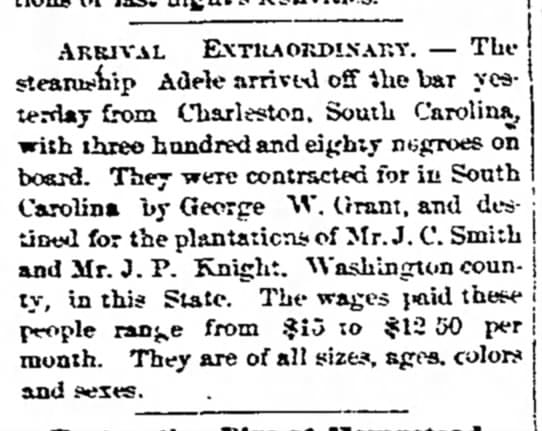
Arrival From Charleston SC
Notice of Freedmen gathering in Charleston to prepare for migration to Texas aboard the Adele.
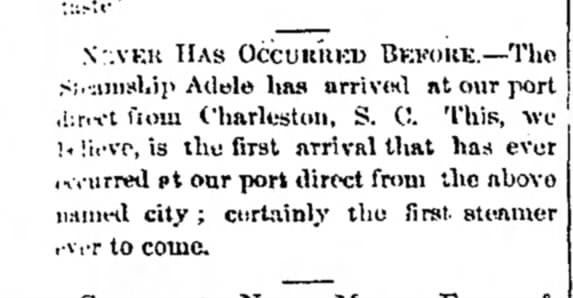
Steamship Adele Arrival
Confirms the arrival of the Adele carrying Freedmen emigrants bound for Texas.
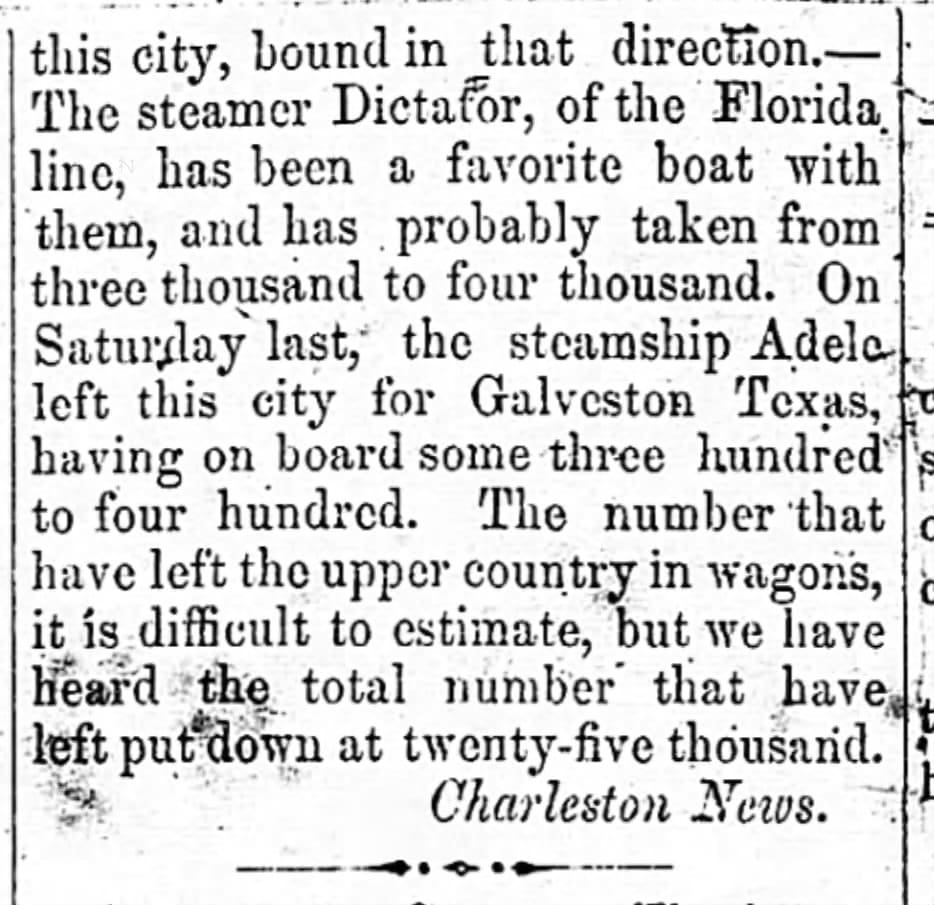
Adele Depart to Galveston
Newspaper report describing the ship’s departure with hundreds of Freedmen emigrants.
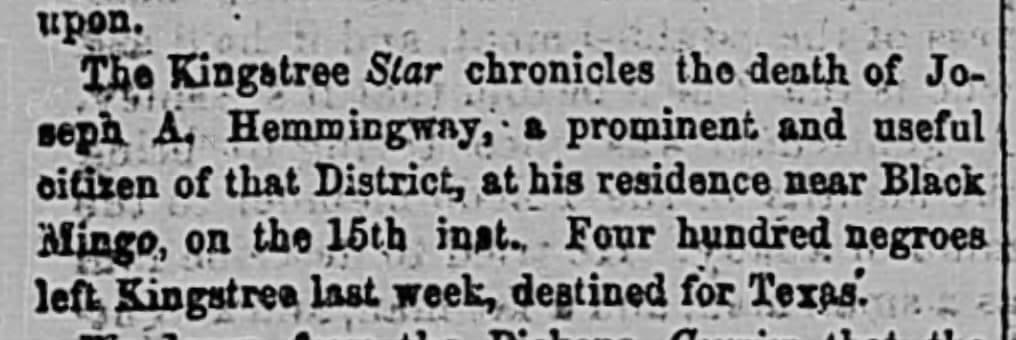
The Kingstree Star Chronocles
Local coverage reflecting community views of the mass migration, often laced with bias and stereotypes.
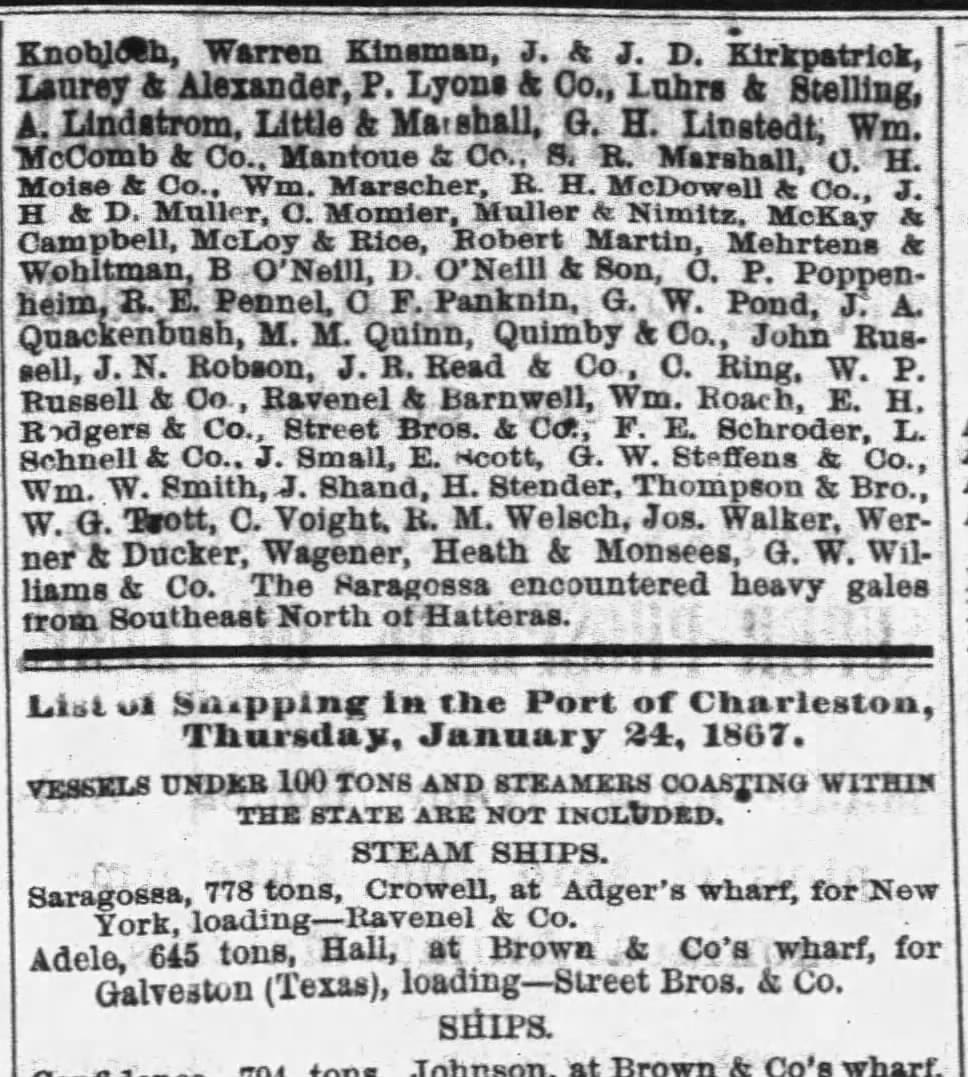
Adele Leaving Port
Departure announcement marking the final leg of the Freedmen’s journey from South Carolina to Texas.
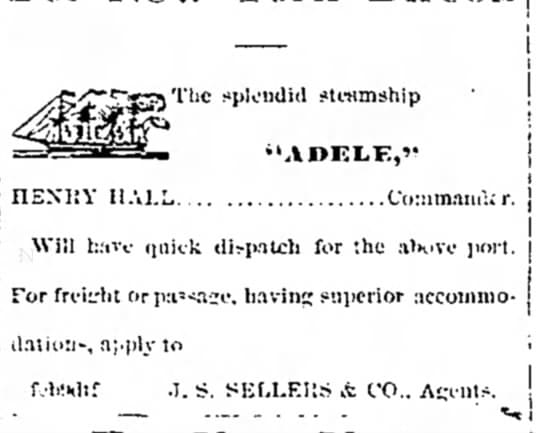
The Splendid Steamship Adele
A descriptive piece highlighting the ship itself, which carried the Freedmen across the Gulf.
Meet the Project Team

Sharon Johnson Styles
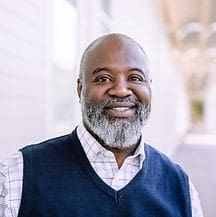
Pastor David Hill

Angela Shaw Ross
